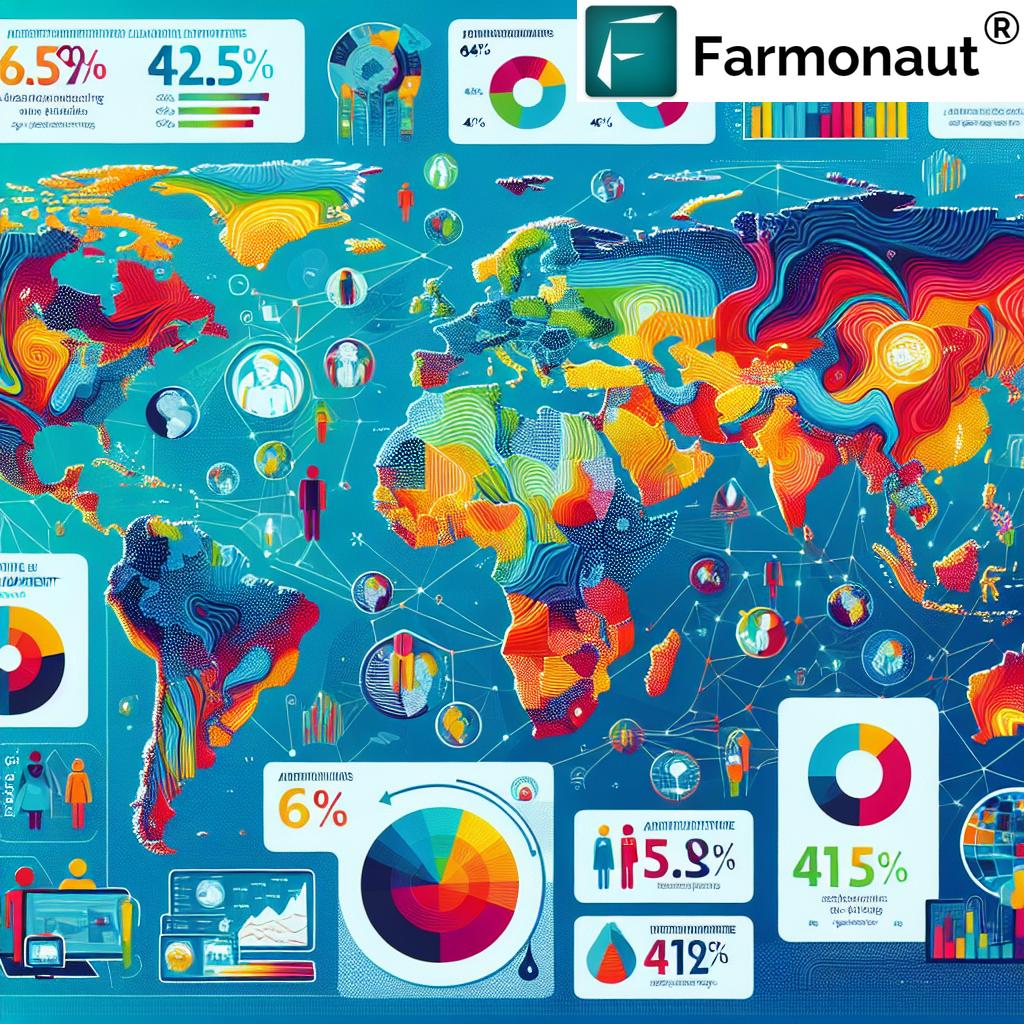Unveiling the Global Agrifood Workforce: FAO’s Groundbreaking Employment Data Revolutionizes Rural Insights
In a landmark development for the global agricultural sector, the Food and Agriculture Organization of the United Nations (FAO) has unveiled a comprehensive set of global agrifood employment statistics through its revamped FAOSTAT portal. This groundbreaking release of agrifood employment data is set to transform our understanding of rural livelihoods and the agricultural workforce worldwide.

The newly expanded data domain on FAOSTAT now offers a wealth of information through 23 indicators, providing unprecedented insights into the world’s largest labor sector. This development marks a significant milestone in our ability to analyze and understand global employment statistics within the agrifood system.
A New Era of Agricultural Insights
José Rosero Moncayo, Chief Statistician and Director of FAO’s Statistics Division, emphasized the importance of this data release: “The expanded FAOSTAT responds to a critical need to improve the availability of employment data to inform the agrifood systems transformation. It offers a better picture of how many people are working in agrifood systems around the world and highlights their key role in feeding the planet.”
This comprehensive dataset not only provides valuable information for policymakers and researchers but also sets the stage for more detailed monitoring of agricultural workforce trends at local levels in the future.
Key Findings from the FAO FAOSTAT Employment Indicators
- Global Shift: The share of employment in agrifood systems (AFS) has decreased from 52.2% in 2000 to 39.2% in 2021, indicating a significant transformation in the global workforce.
- Regional Variations: Africa leads with 64.5% of employment in AFS, followed by Asia (41.5%), the Americas (22.4%), Oceania (18.7%), and Europe (14.7%).
- Asian Dominance: Asia records the highest number of people working in agrifood systems, with 830 million, primarily driven by China and India.
- Sector Breakdown: Globally, the agricultural sector comprises 67.5% of agrifood system employment, with significant regional differences.
For those interested in leveraging satellite technology for agricultural insights, Farmonaut offers cutting-edge solutions. Check out their web app for state-of-the-art agricultural monitoring tools.

Regional Agricultural Employment Patterns
The FAO FAOSTAT employment indicators reveal fascinating regional agricultural employment patterns:
- Africa: Leads in AFS employment with a strong reliance on agricultural jobs (74.4% of AFS employment).
- Asia: Shows a mix of agrarian economies and growing industrialization, with China and India as major contributors.
- Americas: Demonstrates a more diversified economy with a significant portion of off-farm AFS activities.
- Europe: Has the lowest share of agricultural employment within AFS (34.8%), indicating a highly diversified economy.
- Oceania: Presents a balanced picture with a moderate reliance on AFS employment.
For developers interested in integrating agricultural data into their applications, Farmonaut offers a robust API. Explore their API Developer Docs for more information.
Non-Agricultural Agrifood Jobs Analysis
The FAOSTAT data also provides valuable insights into non-agricultural agrifood jobs:
- Global stability at around 13% of total employment over the past two decades.
- Africa shows growth, reaching 16.5% in 2021.
- The Americas follow at 12.8%, then Asia (12.4%), Oceania (11.9%), and Europe (9.6%).

Implications for Agrifood Systems Transformation
The comprehensive rural livelihood data provided by FAO’s FAOSTAT is crucial for understanding and guiding the ongoing agrifood systems transformation. This transformation is essential for addressing global challenges such as food security, climate change, and sustainable development.
Key implications include:
- Informed policy-making for rural development
- Better targeting of agricultural investments
- Enhanced understanding of food sector employment trends
- Improved strategies for sustainable agricultural practices
For farmers and agricultural professionals looking to leverage technology in their work, Farmonaut offers mobile applications for both Android and iOS platforms:


The Road Ahead: Leveraging Data for Sustainable Agriculture
As we move forward, the wealth of information provided by the FAO employment indicators will be instrumental in shaping the future of global agriculture. This data will enable:
- More targeted interventions in rural development
- Better understanding of the impact of technological advancements on agricultural employment
- Improved forecasting of food sector employment trends
- Enhanced strategies for addressing challenges in rural livelihoods
The release of this comprehensive agrifood employment data marks a significant step towards a more informed and sustainable global agricultural sector. As we continue to navigate the complexities of feeding a growing world population while addressing environmental concerns, the insights provided by FAO’s FAOSTAT will be invaluable.
For those looking to stay at the forefront of agricultural technology and data-driven farming, Farmonaut’s suite of tools and applications offers cutting-edge solutions. Whether you’re a farmer, researcher, or policymaker, embracing these technological advancements can significantly enhance your ability to make informed decisions and contribute to the ongoing transformation of global agrifood systems.
As we move forward, it’s clear that the integration of comprehensive data, like that provided by FAO’s FAOSTAT, with advanced agricultural technologies will play a crucial role in shaping a more sustainable and efficient global food system. The unveiling of this groundbreaking employment data is not just a milestone for statisticians and researchers; it’s a leap forward for anyone involved in agriculture and rural development worldwide.













